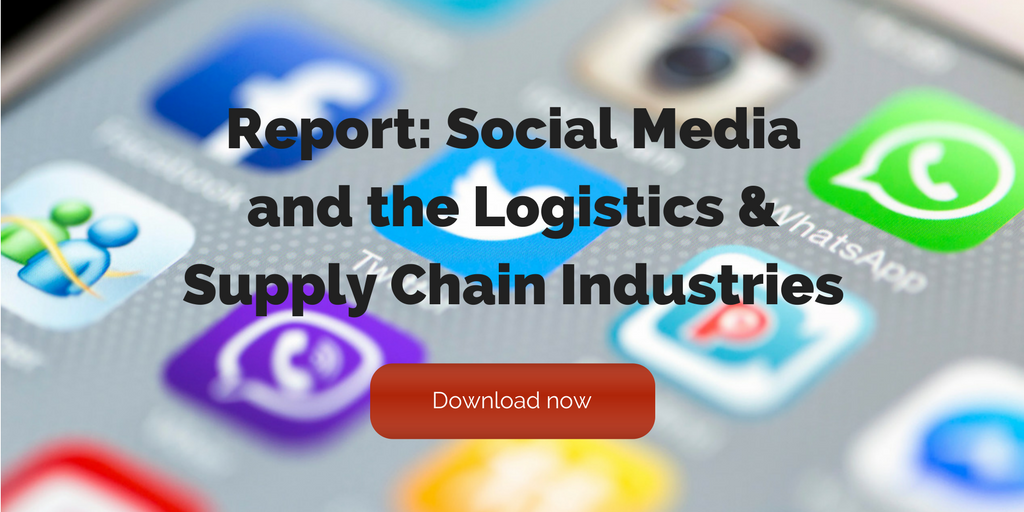
by Fronetics | Dec 19, 2017 | Blog, Marketing
Email is one of the most utilized tools in your marketing toolbox, but marketers need to continuously develop their email practices to keep up with the rapidly changing interests of audiences.
Email marketing is a powerful tool for growing and developing your business. You probably get hundreds of marketing emails from all kinds of companies you patronize (and even those you don’t) every day. So you know as well as anyone that not all email marketing is created equal.
Especially in B2B culture, there is a right way — and many wrong ways — to do email marketing. Our blog hit on many best practices in 2017 that are important for B2B marketers to keep in mind as they create marketing emails.
Here are the top 7 email marketing posts for 2017.
1. 7 Email Marketing Tips for Manufacturers and Industrial Companies
Here are seven tips for manufacturers to improve your email marketing strategy in the manufacturing and industrial sector. Many manufacturers and industrial companies are still stuck in the one-off batch and blast mode of email marketing. That strategy is not likely to work very well in industrial marketing, where most of the purchases include complex products with long sales cycles, multiple decision-makers, and stakeholders are involved. Read more.
2. 7 Techniques for Personalizing Marketing Emails and Boosting Engagement
Personalizing marketing emails increases open rates, click-throughs, and revenue, but it takes so much more than addressing recipients by name. Marketers can use information they have about subscribers to tailor email content for individuals, based on who they are or where they are in the buyer’s journey. Read more.
3. 4 Email Marketing Stats that Prove You Spend Too Much Time Creating Emails
Email marketing can be a challenge — to say the least. The constantly changing email landscape, marketing trends, and privacy regulations can make staying on top of your email game very tough. Take a look at these 4 statistics and why streamlining and automating certain aspects of your email marketing program might free you up to focus on factors that can make a difference. Read more.
4. Increase Revenue from Marketing Emails by 760% with This One Trick
Email list segmentation is the one of the simplest and most critical practices to improving marketing email performance. Marketing emails are an important part of lead nurturing: They can make or break whether a lead becomes a sale. So marketers spend a lot of time and money thinking about how to perfect their messages. Read more.
5. 5 Biggest Email Subject Line Mistakes to Avoid
Email marketers, beware: If you’re tasked with writing compelling emails to capture online customers, the subject line — the headline of your message — is the first and main spot to grab the viewer’s attention. But, while a cleverly written subject can boost open rates and click-throughs, a poorly written one can have the opposite effect. Read more.
6. Three Marketing Email Crimes to Avoid
Are your marketing emails annoying your customers and prospects? We’ve all felt it: the visceral annoyance on opening an email — because it’s the fifth one from the same company in two days, or because it’s packed with hyperbole or an off-putting sales pitch. As it turns out, recent research has shown that this reaction is only too natural. We’re predisposed to view the tone of email more negatively than it was written. Read more.
7. Mobile-Friendly Emails: 6 Tips for Success
Use these 6 tips for more mobile-friendly emails to improve recipient engagement rates and to promote profitable customer action. When a majority of your audience is reading your marketing emails on their mobile devices, it’s imperative that you’re creating emails that are optimized for mobile viewing. Here are 6 essential tips for creating mobile-friendly email campaigns. Read more.
Related posts:


by Fronetics | Dec 12, 2017 | Blog, Content Marketing, Marketing
Our most-viewed content marketing posts indicate that marketers are seeking solutions to improve their content marketing programs.
Supply chain and logistics marketers are increasingly seeing the value of content marketing. It is the most cost-effective method to earn leads and sales because it takes into account the way modern B2B buyers are making purchasing decisions (evaluating content they find on the internet).
Looking at our most-viewed content marketing posts this year, I see a trend: marketers are looking for solutions to improve their content marketing programs. I am currently working on our content calendar for 2018, so if there is anything specific you would like to know about, please feel free to email me with suggestions!
Top 10 content marketing posts
1) 4 Ways to Measure Brand Awareness
Building brand awareness is one of the key benefits of content marketing, but it’s notoriously difficult to measure. These four metrics can indicate that you are successfully drawing the public’s attention to — and heightening their knowledge of — your business. That will ultimately generate leads that turn into sales, which is the end marketing objective. Read full post
2) How to Write Better Headlines for LinkedIn Content in 2017
A study of 2016’s most popular content on LinkedIn used data to measure the most popular headlines and topics. The results are really interesting and say a lot about what content resonates with the general LinkedIn community. Tis post summarizes the most popular headline phrases and the most impactful headline words and topics, and suggests ow to use this knowledge to write more successful headlines for your LinkedIn content. Read full post
3) 4 Steps to Building a Successful DIY Content Marketing Strategy
Setting your content marketing strategy is a crucial first step in trying to reach your target audience. Before you begin writing blogs and posting tweets, you need to set goals. A content marketing strategy outlines the methods by which you will target, reach, and engage your audience. Here are four steps, outlined in the guide, to creating a successful foundation to your content marketing strategy. Read full post
4) Want More Leads? Write Better Content
All too often, marketers fall into the trap of sacrificing quality for quantity in their content writing efforts. It’s an easy mistake to make — the pressure to produce a constant stream of content can naturally lead to a drop in quality. But if you’re not writing high-quality, substantive content, you’re wasting time and energy. If you’re wondering whether your content might not measure up, ask yourself these six questions. Read full post
5) 7 Marketing Tasks Supply Chain and Logistics Companies Should Consider Outsourcing
Everyone needs a little help sometimes. In fact, 52% of B2B marketers attribute stagnancy in success to not having enough time devoted to their marketing programs, and 49% attribute stagnation to content creation challenges. Outsourcing marketing allows you to focus on insourcing your core competencies while delegating specialized tasks to external experts. And it’s important to note that you don’t have to outsource ALL of your marketing. Choosing several areas beyond your staff’s expertise or that are particularly time-consuming can help you improve your marketing efforts and take stress off an overworked internal marketing team. Read full post
6) 10 Stats You Should Know about the B2B Buyer’s Journey
Marketers need to be aware of the ways in which the B2B buyer’s journey has changed over the last decade. The vast amount of information available on the internet has afforded buyers a level of self-sufficiency that renders traditional sales models moot. It drives the need for new strategies, like content marketing and social media marketing. The latest B2B Buyer’s Survey offers insight into how B2B buyers are finding vendors, engaging with them, and — ultimately — deciding to work with one. Read full post
7) 3 Tools for Measuring Your Content Marketing ROI
Analyzing the right metrics is crucial to determining whether you are achieving content marketing ROI. According to our Social Media Use Report, 81% of respondents wanted a tracking and measuring tool to prove their ROI. Your resources are limited, so it’s crucial to evaluate your efforts with meaningful numbers that illustrate their effect on your bottom line. So what are they best metrics to use? Here are three of our favorite tools. Read full post
8) 3 Content Marketing Challenges Large B2B Enterprises Face
B2B enterprises with 1000+ employees face unique content marketing challenges that can hinder a program’s overall success. The Content Marketing Institute’s 2017 B2B Enterprise Content Marketing Report brings many of these issues to light. For example, pressure to produce results quickly is a death sentence for content marketing. And being forced to create content for a brand, rather than a specific audience, can be detrimental to content marketing results. Yes, challenges facing these enterprise marketers are often as large as the companies for which they work. This post looks at some of the reasons why that is, and a few solutions for solving them. Read full post
9) How Word of Mouth Can Work for You
Buyers value the opinions of peers and colleagues. In fact, B2B buyers rank it among their top three resources for information. And, in general, 82% of Americans seek recommendations when making a purchase of any kind. Make their chatter work for you. Here are three tips to turn word-of-mouth marketing into leads. Read full post
10) 3 Quick SEO Tips to Improve Your Blog Right Now
Content marketing aims to draw potential buyers who are searching the internet for products and services like yours to your website. The strategic distribution of content helps search engines understand what your website is all about and direct relevant parties to it. You can help the search engines’ algorithms more effectively link searchers and your content by doing these 3 easy things. Read full post
Related posts:


by Fronetics | Dec 5, 2017 | Blog, Content Marketing, Current Events, Logistics, Marketing, Supply Chain
Companies in the supply chain and logistics industries should take note of these 4 trends that are gaining traction as we move into 2018.
Joe Pulizzi of the Content Marketing Institute recently revealed his predictions for the biggest trends in content marketing for 2018. As the founder of CMI, Pulizzi dedicates his time discussing how content marketing has evolved with leading marketers from around the world and keeps his finger on the pulse of content marketing trends.
Most of the predications we discussed for 2017 are still holding true as we roll into another calendar year. Supply chain and logistics companies are still working overtime to nail down a true content marketing strategy. Native advertising is still the “gateway drug” to content marketing. And the growing dependence on mobile devices has continued to skyrocket.
What does this mean for 2018?
The key trends from 2017 continue to highlight the importance of good content. With over one million new-data-producing social media users each day, high-quality content is the only way to stand out from the masses. As you start to strategize for next year, and beyond, be sure to consider these trends in your supply chain marketing plans.
4 content marketing trends for 2018
1. Original content is king
A recent report claims that Apple is planning to invest over $1 billion on original content. Why the hefty price tag? As competition in the mobile space continues to heat up, brands need to do more to stay relevant. Valuable, original content can help companies like Apple grow its audience and keep its current customers coming back for more.
What does this mean for you? Pulizzi believes that this trend will offer companies multiple options to monetize their content. Either through direct sales to customers or advertising and sponsorship opportunities, supply chain and logistics companies will be able to cash in on their original content.
Make sure to keep a close eye on your competitor’s content. More and more companies will see the value in original content and look to build loyalty and support from their growing audience.
2. Creating vs. purchasing
For those supply chain and logistics companies that don’t have the time or resources to invest in creating original content, acquisitions will offer a pricey solution. 2018 will see a spike in content marketing brand acquisitions, giving companies full-service content options. Back in August, Netflix acquired Millarworld, a comic book publisher, hoping to gain traction with cutting-edge content in a host of different mediums.
While 62% of companies outsource their content marketing, the rise in acquisitions highlights the value of content creation and distribution. The decision to create content vs. buy will depend on the size of your wallet.
3. Content marketing budgets on the rise
According to Marketingmag.com, content marketing will become a $300 billion industry by 2019. That’s a lot of money being spent on content creation and distribution, which can only mean one thing: content marketing budgets are increasing. 39% of marketers expect their content marketing budgets to increase this year.
More brands are seeing the effectiveness of content marketing over traditional advertising. Moving away from traditional advertising and optimizing your content marketing strategy will make your marketing budget dollars stretch further and work harder in getting your content in front of the right people.
4. Content marketing overlap
Many of us are familiar with Marcus Sheridan’s story about the success of his pool company and starting the Sales Lion. Desperate to save his company, Sheridan threw himself into content marketing and created the most-visited swimming pool website in the world. Sheridan’s biggest take away? Marketing is a team sport. “Want content marketing to work? Involve everybody on your teams,” writes Sheridan.
Content marketing doesn’t work in a silo and without leadership. For content marketing to be most effective, leaders need to give clear ownership to someone over your content marketing strategy. From there, everyone needs to get on board, creating a culture of content. Your sales teams should integrate your content marketing into their sales processes. Your PR team should meet regularly with your social media experts.
“To say you have a culture of content is to say that everyone who works for your company understands the value of the information you provide and participates in making that information useful,” writes Marcia Reifer Johnston.
Overlap is bound to happen in your content marketing endeavors. The key is to have clear leadership over your strategy and regularly communicate your goals and initiatives, so your entire team can be engaged in your efforts.
Related posts:


by Fronetics | Nov 8, 2017 | Blog, Data/Analytics
Marcus Tober, Searchmetrics founder, suggests three key ways to make your content more relevant and to improve your SEO visibility.
We talk a lot about the importance of content, like here and here. Content is everywhere, and companies are working hard to continually produce new content. But not all content is created equal.
Searchmetrics founder Marcus Tober discusses how data is changing the relevancy of content in his conference talk, Mastering the World of Deep Learning: How Big Data Is Making Content More Relevant in Search. As a pioneer in search-analytics software, Tober has watched search engines become more advanced at figuring out which web pages people will find relevant. Through years of research, Tober offers three lessons to make your content more relevant.
3 ways to make your content more relevant
Develop your content niche.
“Experts are not called upon because they are the smartest person in every room; they are called upon because they are the smartest person in a specific room.” John Gordon
Find your area of expertise, or niche, in your market and focus your content around this topic. Instead of writing broadly about various subjects relevant to your industry, your writers should tackle tough questions and introduce cutting-edge thought leadership in one key area that defines your company’s strength.
Marcus says, “This means that if you specialize in something and make it really good because you understand the user, you can have great search performance” compared with a huge site that produces content about everything.
Through this valuable and focused content, your company will stand out as a leader in your industry. Audiences will know how to categorize you, which sounds like a bad thing, but isn’t. When they have a specific question, they know to turn to you as a specific expert.
Get rid of ROT.
ROT (redundant, outdated, and trivial content) can sink your website. “Think about your house. We’re all a bit messy and a bit lazy. Likewise, I can imagine that you have a lot of content that maybe you should get rid of or should merge with something else you have,” says Tober.
Many companies keep older ROT content because of the volume of posts they want under their belts. Tober worked with a German company, Pflege.de (similar to care.com), which was afraid of cleaning out its ROT because of the internal links and the possibility of older posts still bringing in traffic.
On Tober’s recommendation, Pflege purged ROT and lost 95% of its content. 95%! The content the company was left with was more relevant and ranked higher with search engines. Pflege’s SEO visibility grew 240% within a few short months.
Update remaining content to address user intentions.
It’s not enough to just get rid of ROT. You also need to keep an eye on older content and make sure you continue to update as needed. “You have to make what’s left really good,” Marcus says.
What is meant by content that is “really good?” He means content that addresses people’s intentions – content that meets the information needs underlying the keywords and phrases they use.
Big data can help brands track their older content and make changes to address audience questions and relevancy. Tober’s company, Searchmetrics, is an example of a data service that helps companies take an in-depth look at older content and how it addresses user intentions. When brands update content to address specific wants and needs, it can boost online visibility and reveal new potential for older posts.
Improving your company’s SEO visibility can be easier to achieve than you think. Using these three steps, you can get ahead of search engines and place your brand in front of untapped audiences.
Related posts:


by Fronetics | Oct 17, 2017 | Blog, Content Marketing, Marketing, Strategy
Use these strategies to help your business generate revenue with content.
One of the biggest challenges inherent to content marketing is measuring how writing blog posts and posting on social media equals a revenue stream. I know I write over and over again in this space about how content marketing is one of the most effective strategies for growing business and generating revenue. But many in the supply chain industry still struggle to understand the connection.
I highly suggest listening to this podcast interview with Content Marketing Institute founder Joe Pulizzi. He talks about monetizing content. In summary, businesses need to be about more than just their products and services — they need to be a valuable resource for their customers. This is why content marketing works. It’s a move away from the promotion of products toward branding oneself as a source of knowledge.
But back to monetization. Here are some key takeaways from Joe’s interview about how to generate revenue with content.
Revenue models
Once you’ve established your outlets for content distribution (blog, podcast, YouTube channel, social media platforms, or other publishing outlets) and built an audience, how do you go about generating revenue? According to Joe, there are 10 different revenue opportunities.
The traditional opportunities that most companies think about are:
- Selling products
- Selling services
- Keeping customers longer
- Increasing yield
- Selling different products
But Joe says that there are five additional revenue-generating activities:
- Sell advertising on your site
- Create a sponsorship deal
- Launch a conference or event
- Sell premium content
- Ask for donations
Joe advises that business new to these ideas not try everything at once. “Try one revenue model every six months,” he suggests.
Rethink your marketing department structure
Chances are, your marketing department is set up far less efficiently than it should be.
Joe sees a trend of businesses setting up their marketing departments primarily as an opportunity for the sales team — in other words, they are leading “product-first.” “Yes,” he says. “Selling products is important. But you can’t lead product-first anymore. The only competitive advantage people have today is communication.”
It’s time for marketers to refocus on making markets and creating opportunities for organizations. It’s about creating and developing trusted relationships with your audience, and monetizing those relationships by doing more than selling products. Adopting a new vision for your marketing can turn it from a cost-center into a profit-center, with marketing being “profitable in and of itself.”
Related posts:






